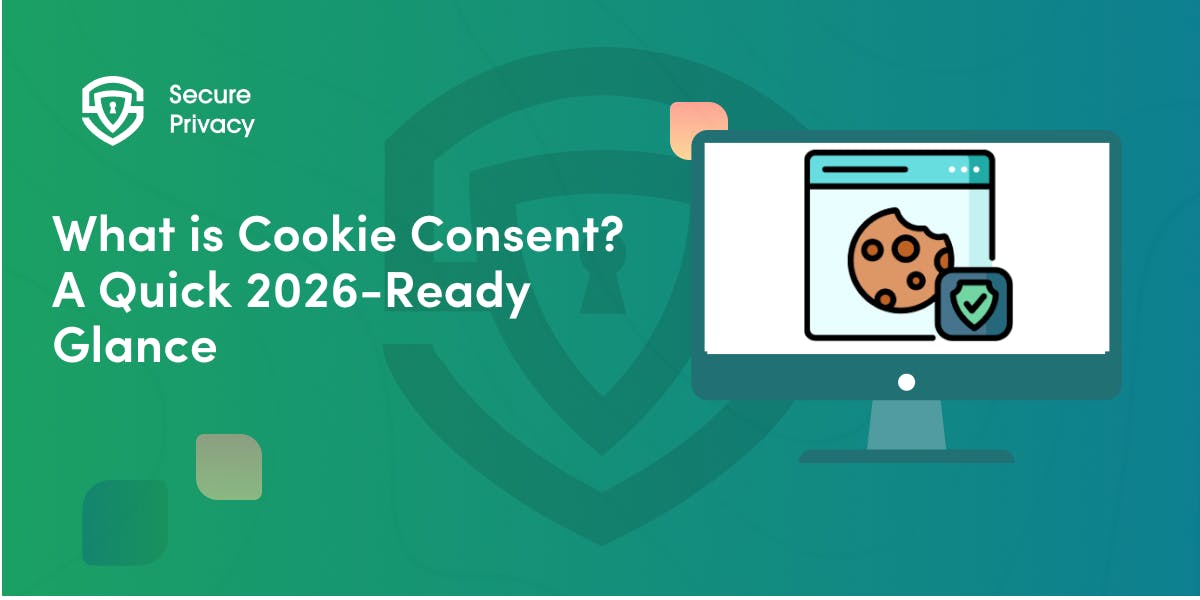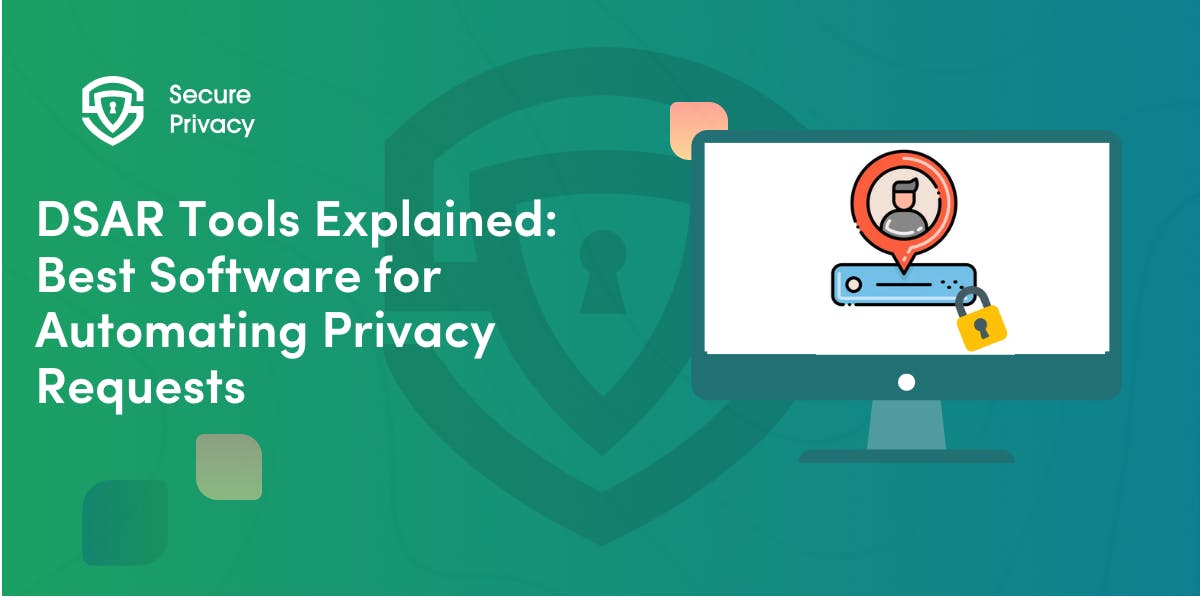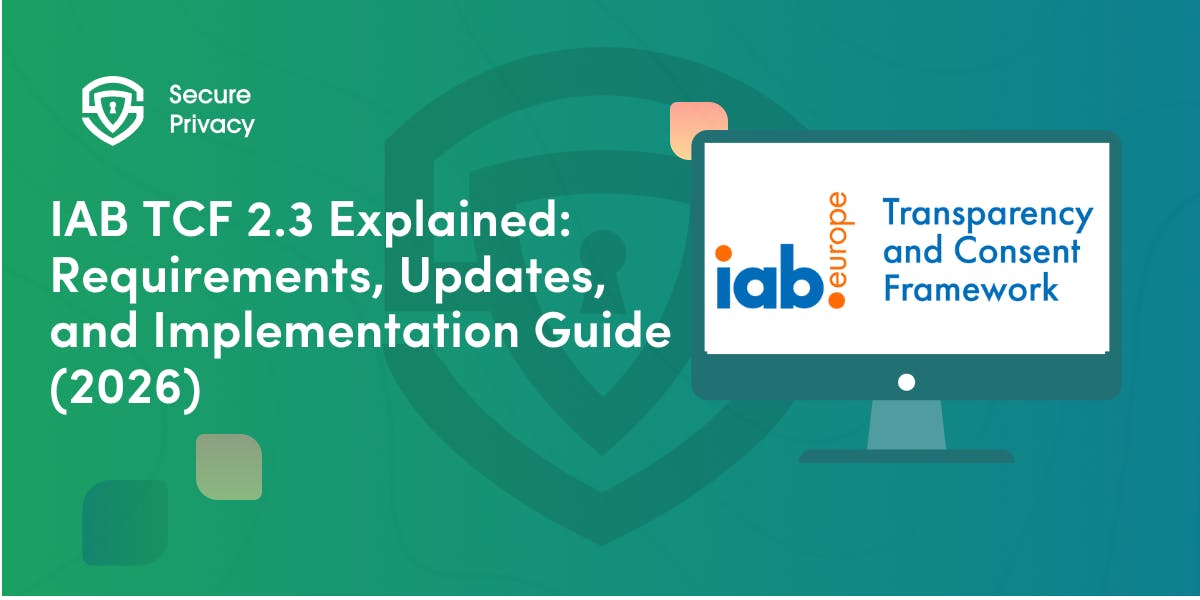Web5 Consent Management: How Decentralized Identity Changes Privacy Control
Right now, your personal information is scattered across dozens of companies. Google knows what you search for, Facebook controls your social connections, Amazon tracks what you buy, and countless other companies collect pieces of your digital life. You have almost no control over this data once you hand it over. Web5 wants to completely flip this system by giving you full ownership of your digital identity and data.
This isn't just another tech buzzword. Web5 could fundamentally change how privacy works online by letting you control your own information instead of trusting big tech companies. But this major shift creates new problems for managing consent—the permissions you give companies to use your data. Privacy laws like GDPR were written assuming companies would control your data, not you.
The stakes are huge. Web5 could be the biggest change in digital privacy since the internet was created, offering real control instead of just regulatory compliance. But if we can't solve the problems around consent management, user experience, and legal compliance, this technology might stay limited to tech experts instead of helping everyone.
How Web5 Changes Consent Management
Web5 uses three main technologies that work together to let you control your own data relationships instead of depending on companies.
You Get Your Own Digital Identity
Instead of using email addresses or social media accounts that companies control, Web5 gives you Decentralized Identifiers (DIDs) that you own completely. Think of a DID like did:example:123 as your personal digital passport that no company can take away from you.
This changes everything about giving consent. Instead of agreeing to broad terms of service where companies can lock you out of your account anytime, you give specific permissions while keeping complete control of your identity. You can take back access, move your identity to different services, or change permissions without losing your digital life.
DIDs also let you be much more specific about what you agree to. Instead of accepting huge terms of service documents that cover unknown future uses of your data, you can give permission for specific things while keeping the ability to change or cancel those permissions anytime.
Your Consent Decisions Live in Your Personal Vault
Verifiable Credentials (VCs) work like digital certificates that store your consent decisions and permissions. These live in your personal data vault instead of company databases, so you have direct control over your consent history and decisions.
When you give permission for a company to use your data, that decision gets saved as a verifiable credential that you control. The company can check that your consent is real without storing your personal information in their systems. This reduces data collection while providing stronger proof of valid consent than current checkbox systems.
VCs also mean your consent decisions can move with you between different services. Your privacy choices travel with you instead of being locked into specific platforms or requiring separate consent processes for each service you use.
You Can Actually Take Back Your Consent
Revocation registries let you cancel consent without trying to delete information from permanent blockchain records. These registries track whether your consent is still valid using coded references instead of storing your personal information directly.
When you want to withdraw consent, the registry gets updated to show this change without needing to modify blockchain records that can't be changed. Companies can check whether your consent is still valid by looking at the registry, making sure they follow your withdrawal decisions without exposing your personal information.
This solves one of the biggest conflicts between blockchain technology (which can't delete information) and privacy laws like GDPR (which require companies to delete your data when you ask). Instead of trying to delete information from permanent records, revocation registries make that information unusable while keeping the benefits of unchangeable systems.
Major Problems Web5 Still Needs to Solve
Despite its promising design, Web5 faces big obstacles that must be fixed for people to actually use it.
The Right to Delete Data Conflicts with Blockchain Technology
GDPR requires companies to delete your personal data when you ask them to, but blockchain technology is designed so that information can never be removed once it's recorded. This creates a legal problem when users want to exercise their right to have data erased.
Web5 tries to solve this through revocation registries that store consent status separately from blockchain records while using coded references to avoid storing identifiable information on permanent ledgers. Additionally, temporary DIDs that change regularly can break connections between old records and your current identity.
However, these technical solutions add complexity that could slow down systems and hurt user experience. Organizations must carefully balance the benefits of permanent audit trails with the legal requirements for data deletion, potentially requiring mixed approaches that use both blockchain and traditional database technologies.
Managing Your Own Identity Is Too Complicated for Most People
Average users have trouble managing encryption keys and understanding detailed consent decisions across multiple apps. Unlike current systems where you just click "accept" on terms of service, Web5 requires actively managing digital credentials, encryption keys, and permission settings.
Unified consent dashboards could help by providing simple interfaces for managing permissions across different services while keeping the underlying decentralized structure. These tools would need to translate complex technical concepts into understandable user interfaces that help people make informed decisions without needing technical knowledge.
Automated policy translation could also help by converting legal language from privacy policies into computer-readable formats that users can understand and modify. This automation could reduce the mental burden on users while ensuring better-informed consent decisions.
Different Systems Don't Work Together
Different DID methods and verifiable credential formats create fragmentation that prevents smooth interaction between different Web5 systems. When platforms use incompatible standards, you can't easily transfer your identity and consent decisions between services, limiting the practical benefits of decentralized identity.
Using common W3C standards and Decentralized Identity Foundation specifications could fix these compatibility problems by providing shared formats that work across different platforms. Cross-chain projects that map consent across different blockchain networks could further improve compatibility.
However, getting broad industry adoption of common standards requires coordination among competing technology companies that might prefer proprietary approaches that lock in users. Web5's success depends on solving these coordination challenges while maintaining innovation incentives.
Proving You Withdrew Consent Is Difficult
Companies might ignore requests to cancel consent because there's no clear audit trail or disputes about whether withdrawal attempts are valid. Unlike centralized systems where companies control consent records directly, decentralized systems need more sophisticated ways to prove that valid consent withdrawal happened.
Time-stamped proofs that log consent status changes in privacy-protecting ledgers could provide auditable records of consent decisions and changes. Zero-knowledge proofs could let users prove consent withdrawal without revealing their identities, protecting privacy while ensuring compliance accountability.
These technical solutions need careful implementation to balance privacy protection with the need for verifiable audit trails that regulators and organizations can trust. The complexity of these systems could create barriers to adoption if they prove too difficult for organizations to implement reliably.
How to Actually Implement Web5 Consent
Successful Web5 consent management requires specific technical implementations that work in real situations and meet legal requirements.
Step-by-Step Consent Workflows
Effective Web5 consent workflows typically follow a three-step process that keeps user control while providing organizational compliance assurance. First, users create verifiable credentials for organizations specifying exactly what data processing they consent to, like "Permission to use email address only for newsletter delivery."
Next, organizations store these credentials in decentralized web nodes and reference them through codes in revocation registries, ensuring they can verify consent status without storing personal data directly, affording dark pattern avoidance. When users want to withdraw consent, they update the revocation registry, making the original credential invalid without requiring deletion of unchangeable blockchain records.
This workflow provides stronger consent verification than current checkbox systems while giving users genuine control over their permissions. Organizations benefit from clear consent documentation that can be audited for regulatory compliance while users keep the ability to modify or revoke permissions anytime.
Personal Data Vaults Give You Control
Decentralized Web Nodes (DWNs) work as personal data vaults that store your consent preferences and enable detailed access control through encrypted messaging systems. You can grant or revoke access to specific data pieces for particular purposes while maintaining complete control over your information.
DWNs let applications request data access through standardized protocols instead of requiring you to upload information to centralized platforms. This approach reduces data collection while giving you detailed visibility into how your information is being requested and used.
Block's Web5.js SDK shows practical implementation of DWN protocols that let applications request user data through consent-based access controls. This implementation provides a foundation for building applications that respect user privacy while meeting business requirements for data access.
Legal Compliance Without Revealing Identity
Hyperledger AnonCreds provides anonymous checking of consent withdrawal status that ensures organizations honor consent withdrawals without exposing user identities. This system enables privacy-protecting audit trails that satisfy legal requirements while protecting user anonymity.
The anonymous nature of these systems addresses privacy concerns about consent monitoring while giving organizations the verification capabilities they need for compliance. Users can prove they have validly withdrawn consent without revealing their identities or creating additional privacy risks.
These systems require careful technical implementation to ensure they provide adequate security and privacy protection while remaining practical for organizational adoption. The balance between anonymity and accountability represents one of the key challenges in developing effective Web5 consent management systems.
Real Examples of Web5 in Action
Current Web5 implementations show both the potential and challenges of decentralized consent management across different industries and use cases.
Money Transfer Services
TBD's Web5 money transfer application handles the challenge of balancing Bitcoin transaction transparency with GDPR's data minimization requirements. Users share pseudonymous DIDs for identity verification compliance while storing consent decisions in personal decentralized web nodes.
This approach enables regulatory compliance for financial services while maintaining user privacy and control. Users can provide necessary identity verification information without giving companies broad access to their personal data or losing control over how that information is used.
The money transfer use case shows how Web5 can address specific regulatory requirements in highly regulated industries while maintaining the user empowerment benefits of decentralized identity. However, it also reveals the complexity of implementing compliant systems that work across different regulatory jurisdictions.
Healthcare Data Sharing
European healthcare data sharing under GDPR presents complex challenges for cross-border patient consent that Web5 technologies could address through location-specific verifiable credentials. Patients could create credentials with specific geographic validity, such as "Valid only for treatment in Germany," enabling precise consent control for international medical care.
This approach would give patients detailed control over where and how their medical information can be used while enabling necessary data sharing for treatment purposes. Healthcare providers would receive clear consent documentation that satisfies regulatory requirements while patients maintain ultimate control over their sensitive health information.
The healthcare use case highlights both the potential benefits and implementation challenges of Web5 consent management. While the technology could provide more precise consent control, it also requires sophisticated technical infrastructure that healthcare organizations may struggle to implement effectively.
What's Coming Next for Web5
The future of Web5 consent management depends on fixing current limitations while building broader ecosystem support and regulatory clarity.
New Government Rules Are Coming
Regulatory sandboxes and specialized guidance for self-sovereign identity systems could provide clearer paths for Web5 adoption while ensuring adequate privacy protection. European authorities are developing specific compliance guidelines for SSI ecosystems that could provide the regulatory clarity needed for broader adoption.
These regulatory developments could address current uncertainty about how existing privacy laws apply to decentralized systems while giving organizations clear compliance paths. However, regulatory frameworks must balance innovation support with privacy protection to avoid creating compliance burdens that discourage adoption.
AI-powered consent assistants represent another emerging development that could simplify user experience by automatically negotiating permissions based on user preferences and policies. These systems could reduce the mental burden of managing complex consent decisions while ensuring user preferences are properly implemented.
Technical Infrastructure Is Still Developing
Continued development of Web5 infrastructure requires addressing scalability, compatibility, and user experience challenges that currently limit adoption. Standards development through organizations like the Decentralized Identity Foundation provides pathways for achieving broader compatibility across different implementations.
However, infrastructure development must prioritize practical usability alongside technical sophistication. The most elegant decentralized systems will fail if they prove too complex for ordinary users to understand and manage effectively.
The success of Web5 consent management ultimately depends on creating systems that provide genuine user empowerment while remaining practical for widespread adoption. This requires balancing technical capabilities with user experience considerations and regulatory compliance requirements.
Building Privacy Infrastructure That Actually Serves Users
Web5 represents a fundamental reimagining of digital privacy that shifts control from corporations to individuals. By letting users own their identities and control their data directly, this approach could solve many current privacy problems while creating new opportunities for innovation and user empowerment.
However, realizing this potential requires addressing significant challenges around regulatory compliance, user experience, and technical implementation. The conflict between unchangeable blockchain systems and data deletion requirements, the complexity of managing cryptographic credentials, and the need for compatibility across different platforms all present obstacles that must be overcome for successful adoption.
The solutions emerging from current Web5 development—including revocation registries, decentralized web nodes, and automated consent management—provide promising approaches to these challenges. Yet success will ultimately depend on creating systems that ordinary users can understand and manage while giving organizations practical compliance tools.
As Jack Dorsey notes, "Web5 isn't about replacing the internet—it's about rebuilding it with user sovereignty at the core." This vision of user-controlled digital infrastructure could transform privacy from a compliance burden into a competitive advantage, but only if implementation addresses the practical challenges facing both users and organizations in adopting decentralized identity systems.
The future of digital privacy may well depend on whether Web5 can deliver on its promise of genuine user empowerment while remaining practical enough for mainstream adoption. Success would create digital infrastructure that serves users rather than exploiting them, fundamentally changing the relationship between individuals and technology platforms.
Frequently Asked Questions
How is Web5 consent different from clicking accept on cookie banners?
Web5 consent uses user-controlled digital certificates instead of company-managed databases. Instead of clicking accept on each website, you create specific consent certificates from your personal data vault that companies can verify without storing your personal information. You maintain direct control over these certificates and can modify or cancel them anytime without losing access to your digital identity.
What happens to privacy laws when data is stored on permanent blockchain records?
Web5 handles privacy law requirements through revocation registries that track consent status separately using coded references rather than storing personal data directly on blockchains. When you withdraw consent, the registry updates to make your data effectively unusable without requiring deletion from permanent ledgers. This approach maintains blockchain benefits while enabling legal compliance.
How do regular users manage complex digital credentials without technical knowledge?
Simple consent dashboards provide user-friendly interfaces for managing permissions across different services while hiding underlying technical complexity. These tools translate technical credential management into understandable privacy controls. Additionally, automated systems convert legal privacy policies into easy-to-understand formats that users can easily review and approve.
Can Web5 consent decisions work across different platforms and services?
Yes, through standardized formats based on W3C specifications. Your consent decisions can travel with you between different services without requiring separate consent processes for each platform. However, achieving full compatibility requires broad industry adoption of common standards, which remains a coordination challenge.
How do companies verify valid consent withdrawal in decentralized systems?
Companies check revocation registries to verify current consent status using mathematical proofs rather than relying on centralized databases. Zero-knowledge proofs let users prove consent withdrawal without revealing their identities. Time-stamped proof systems create auditable records of consent changes while maintaining privacy protection.
What are the main barriers stopping people from using Web5 for consent management?
Key barriers include user experience complexity that requires managing digital credentials, regulatory uncertainty about how existing privacy laws apply to decentralized systems, compatibility challenges between different Web5 implementations, and organizational resistance to adopting new technical infrastructure. Success requires addressing these practical adoption challenges alongside technical development.
How does Web5 handle consent for sensitive data like health information?
Web5 enables location-specific and purpose-limited digital certificates that provide precise control over sensitive data sharing. For example, patients could create certificates valid only for specific treatments in particular locations. Healthcare providers receive clear consent documentation while patients maintain ultimate control over their sensitive information through their personal data vaults.
Get Started For Free with the
#1 Cookie Consent Platform.
No credit card required

What is Cookie Consent? A Quick 2026-Ready Glance
Your website loads. Cookies track users. But without proper cookie consent, you're violating GDPR — risking fines up to €20 million or 4% of global revenue. Cookie consent is the legally required mechanism by which websites obtain explicit user approval before deploying non-essential tracking technologies. This requirement stems from GDPR Article 4(11) and the ePrivacy Directive, mandating that consent must be freely given, specific, informed, and unambiguous.
- Legal & News

DSAR Tools Explained: Best Software for Automating Privacy Requests
You're drowning in data subject access requests. Manual searches through dozens of systems miss regulatory deadlines and expose organizations to fines starting at $2,500 per violation. The solution? DSAR tools — purpose-built software that automates the entire process of responding to data subject access requests, from intake to delivery.
- Legal & News

IAB TCF 2.3 Explained: Requirements, Updates, and Implementation Guide (2026)
Your ad revenue dropped 40% overnight. Google stopped bidding on your inventory. Your DSP partners flagged your traffic as non-compliant. The culprit? An outdated TCF 2.2 consent string after the February 2026 enforcement deadline.
- Legal & News
- Cookie Consent

